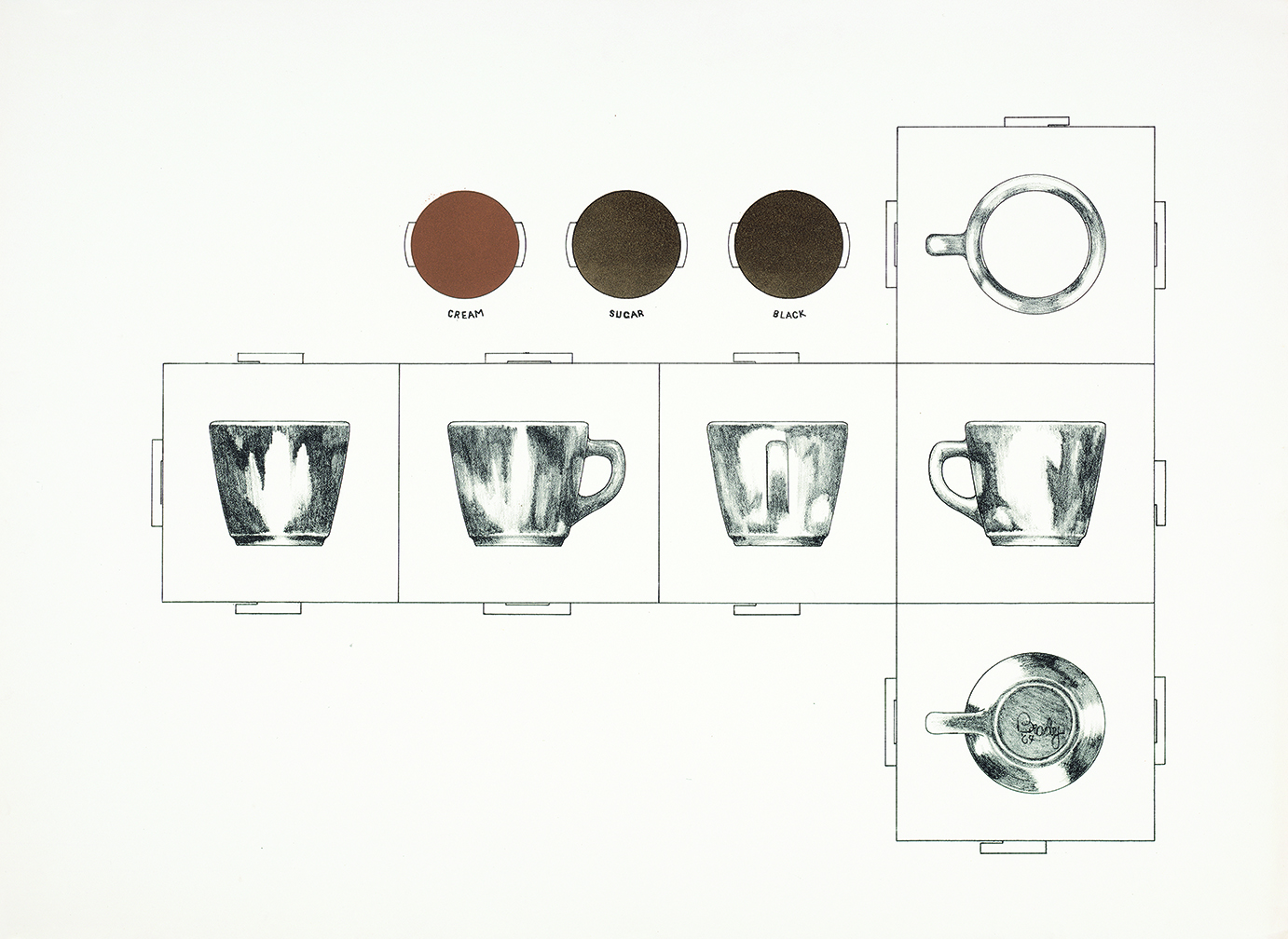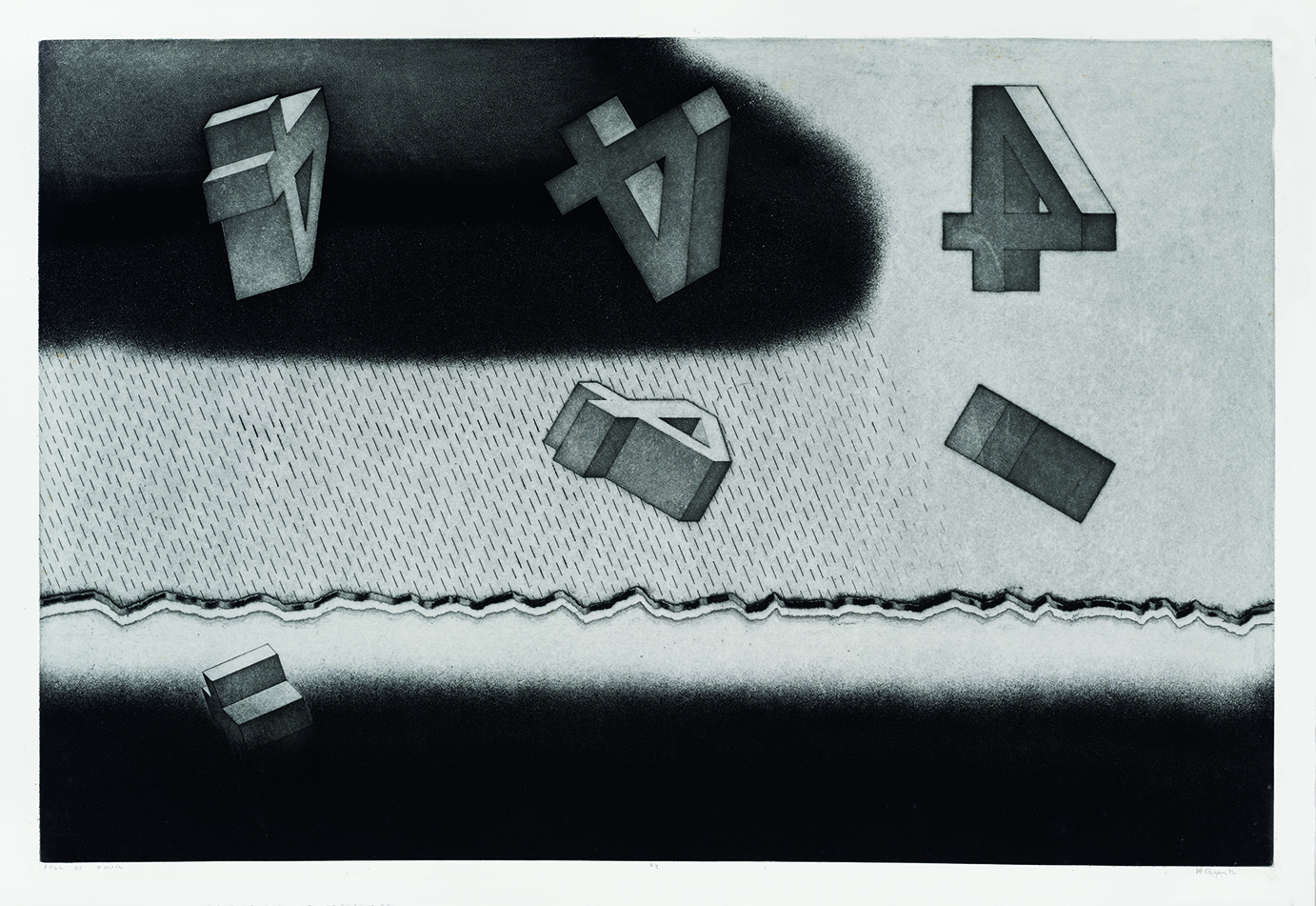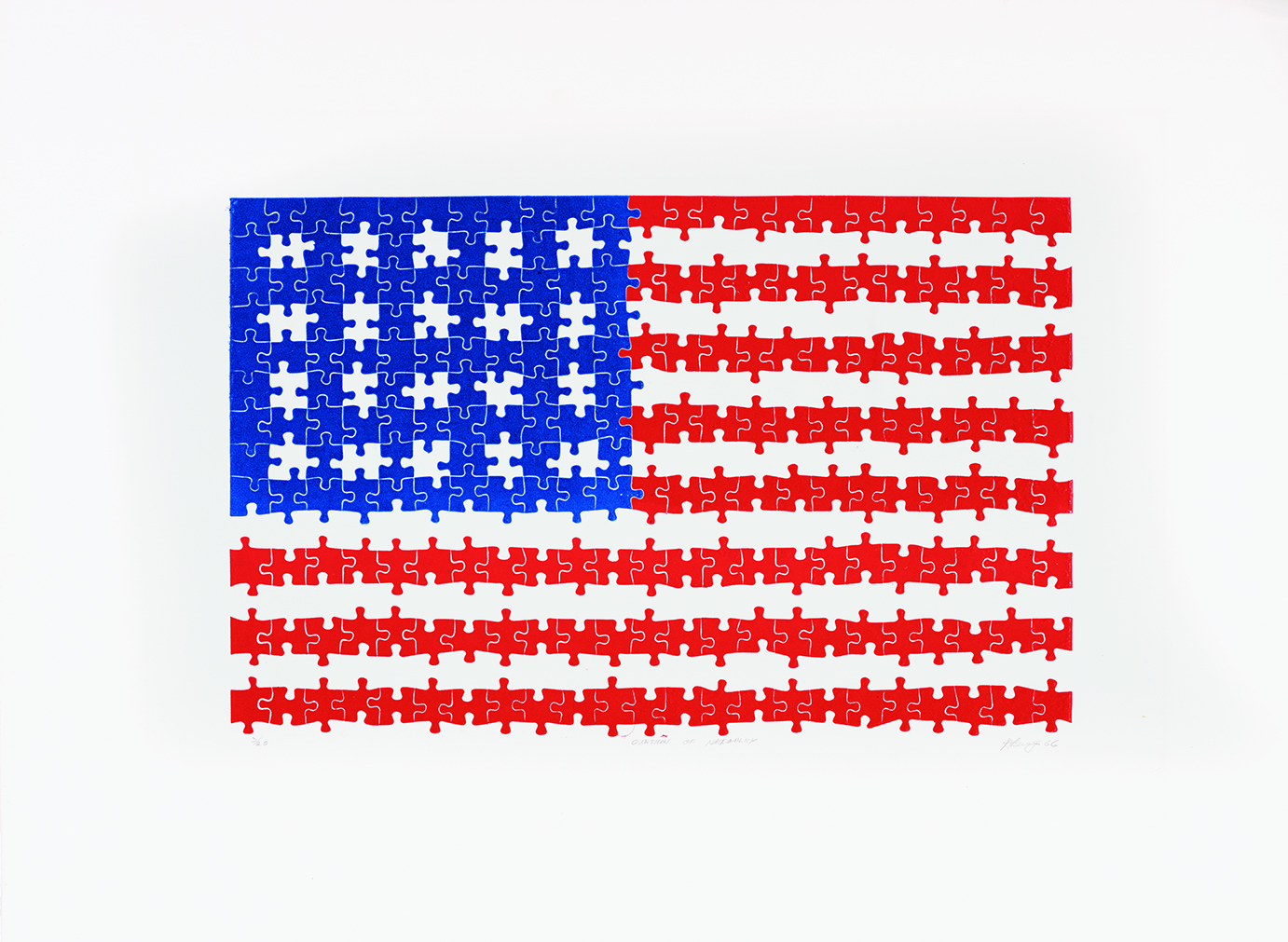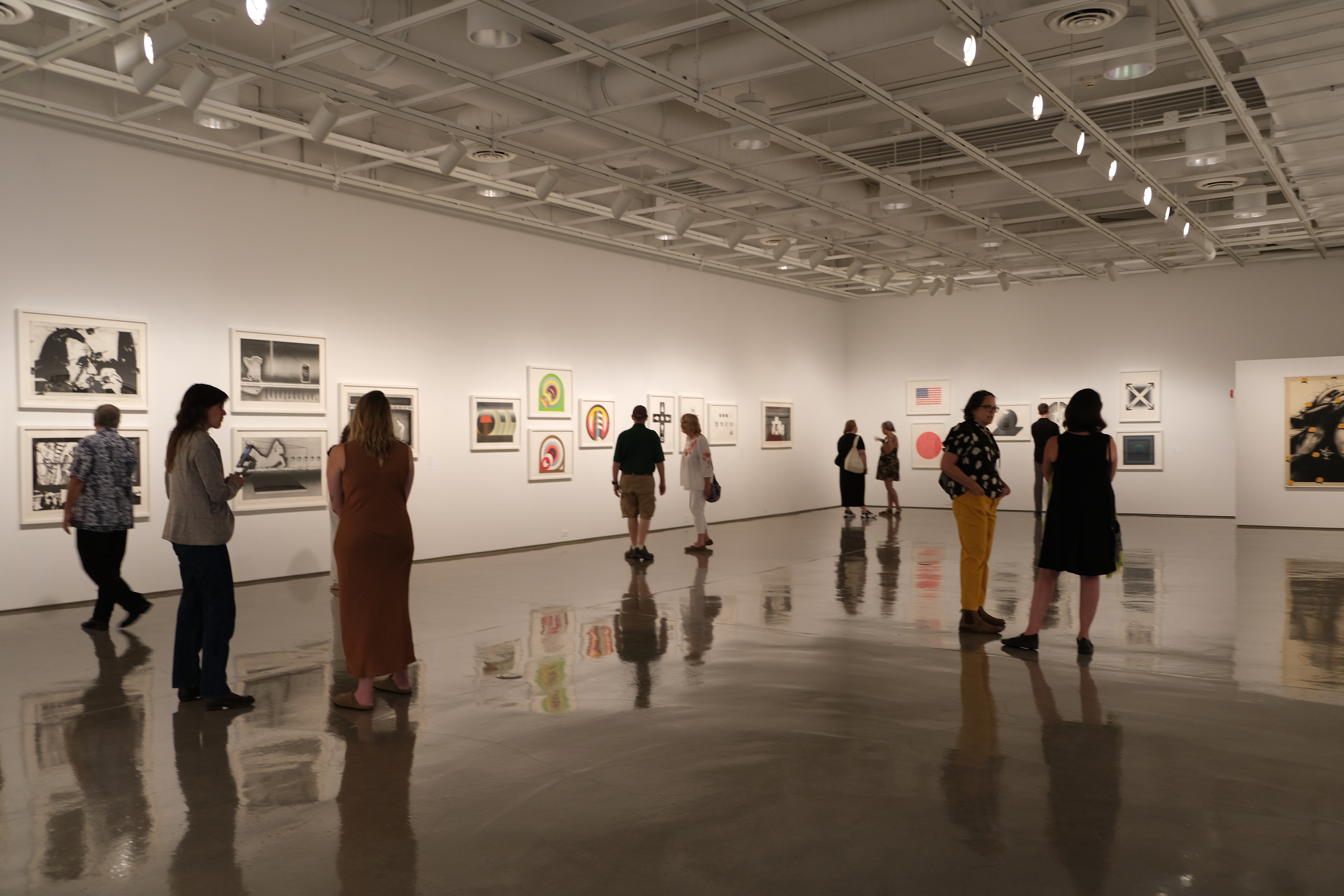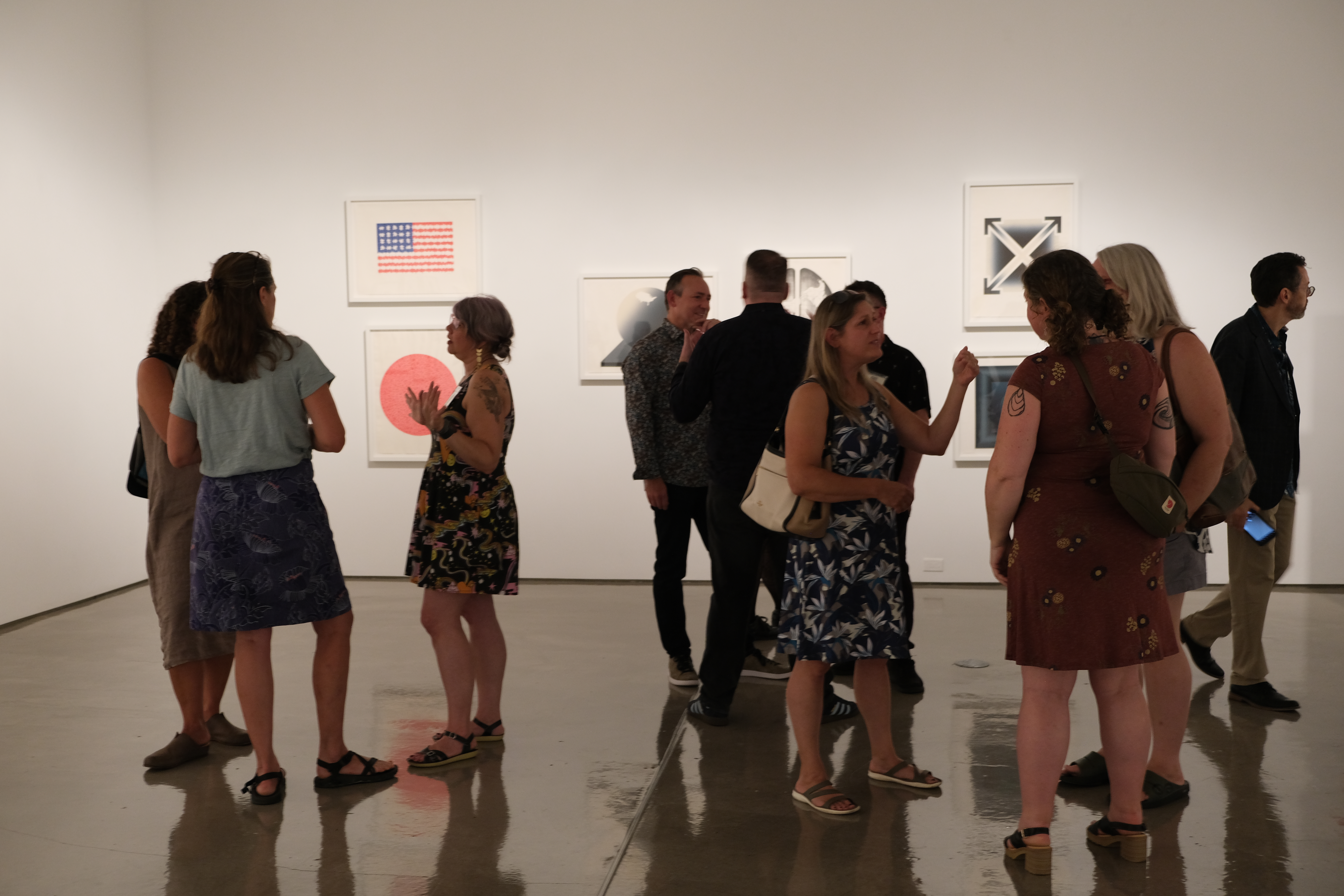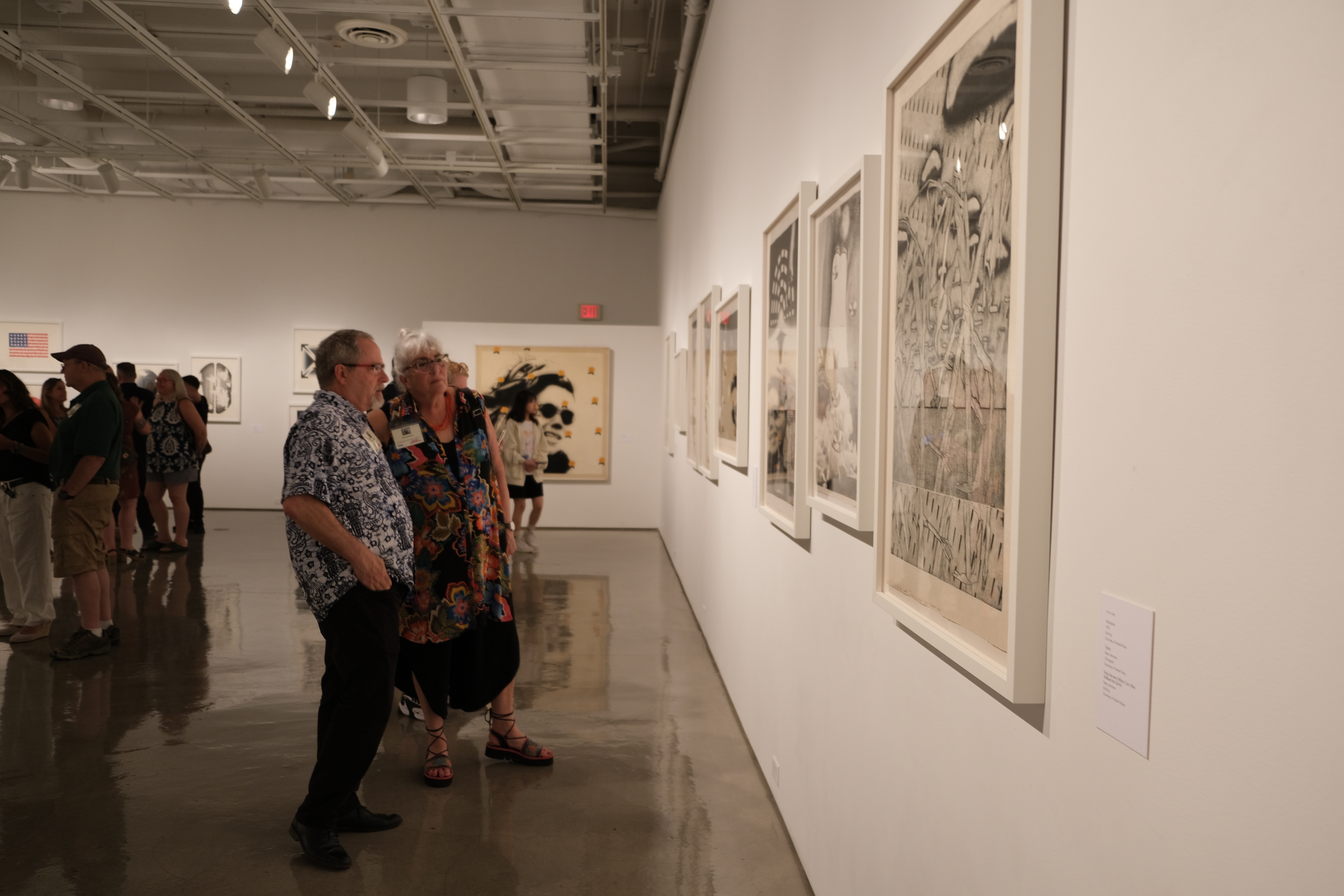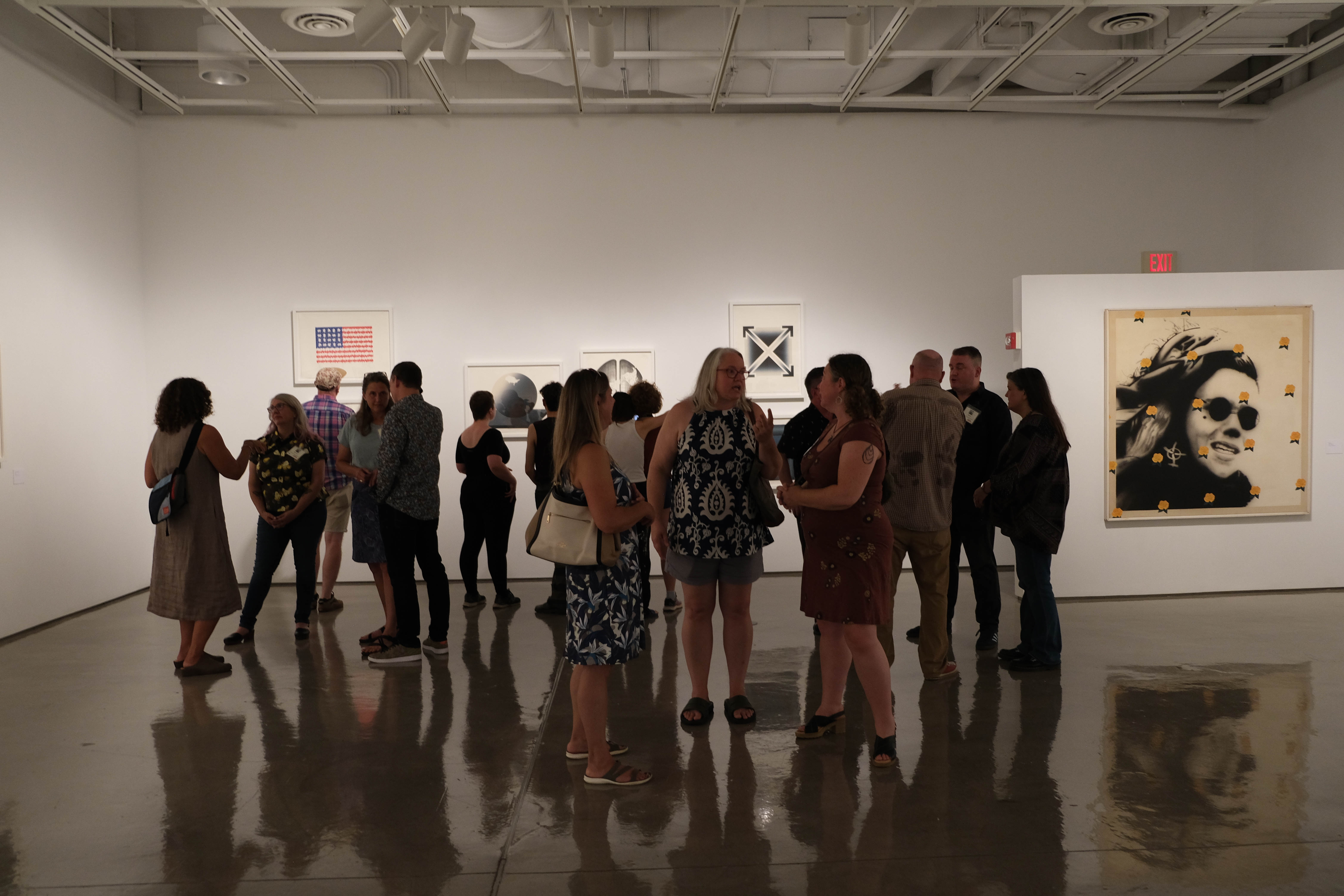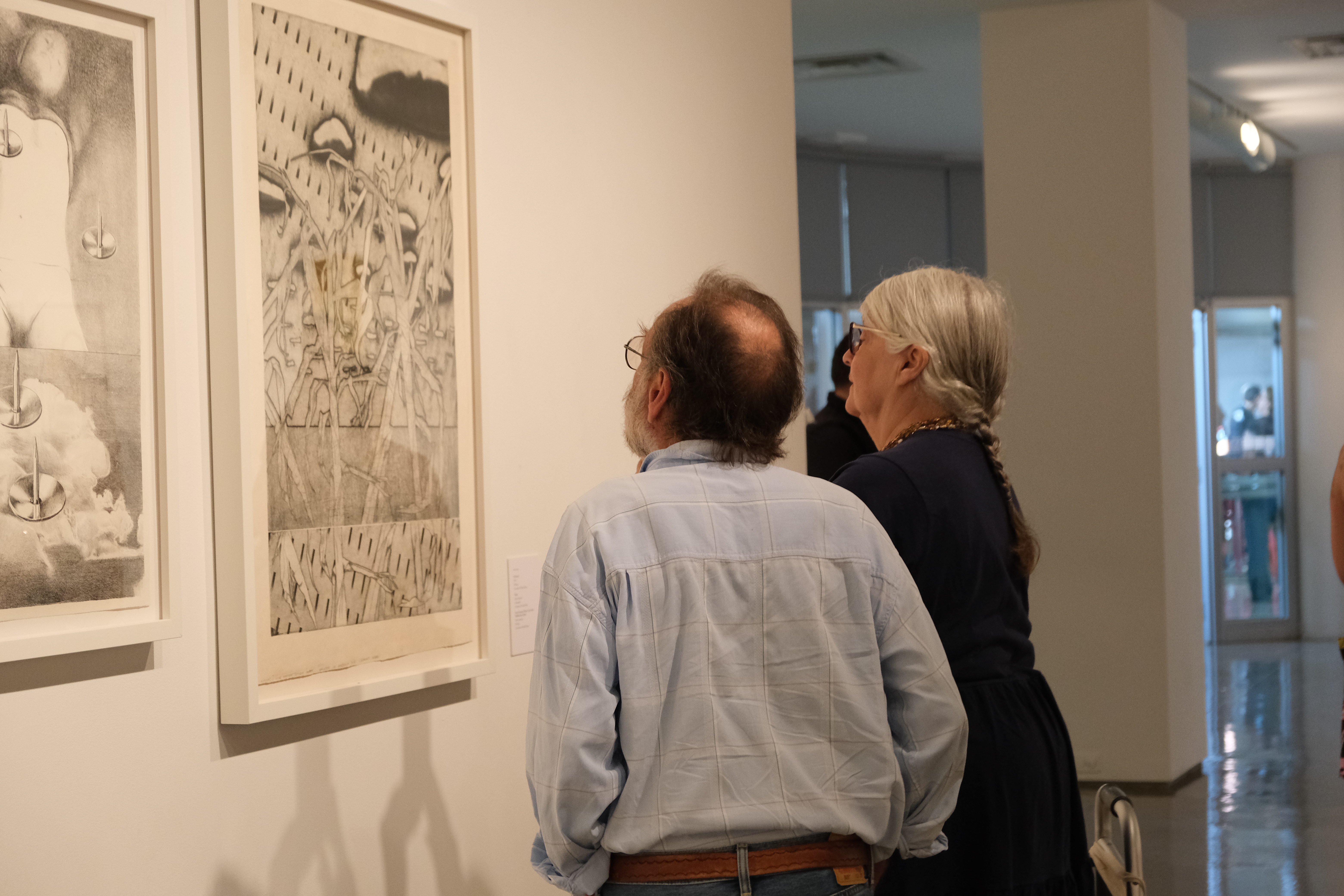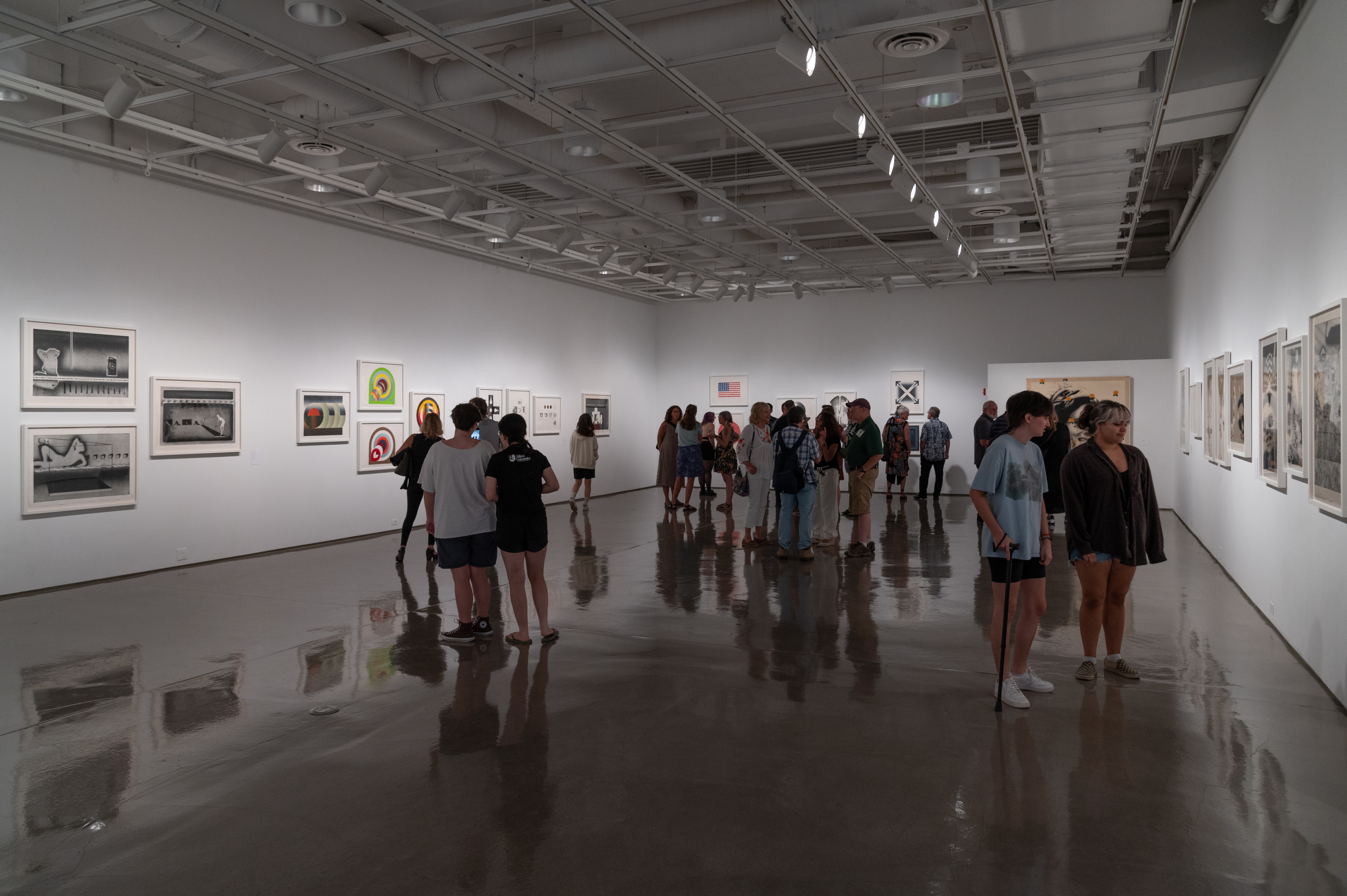September 08, 2023
An event honoring the late Andy Brady, former professor of printmaking in Alfred University’s School of Art and Design, will be held Sept. 8-10 on the Alfred University campus. Brady, who taught at Alfred in the 1970s, is one of the founders of the University’s printmaking program, one of the most innovative and renowned in the country.
Special thanks to the efforts of Pam Cabañas, Joseph Scheer, Chad Latz, Hanah Rose, Angelique Xochime Brady, The Institute for Electronic Arts and The Fosdick-Nelson Gallery.
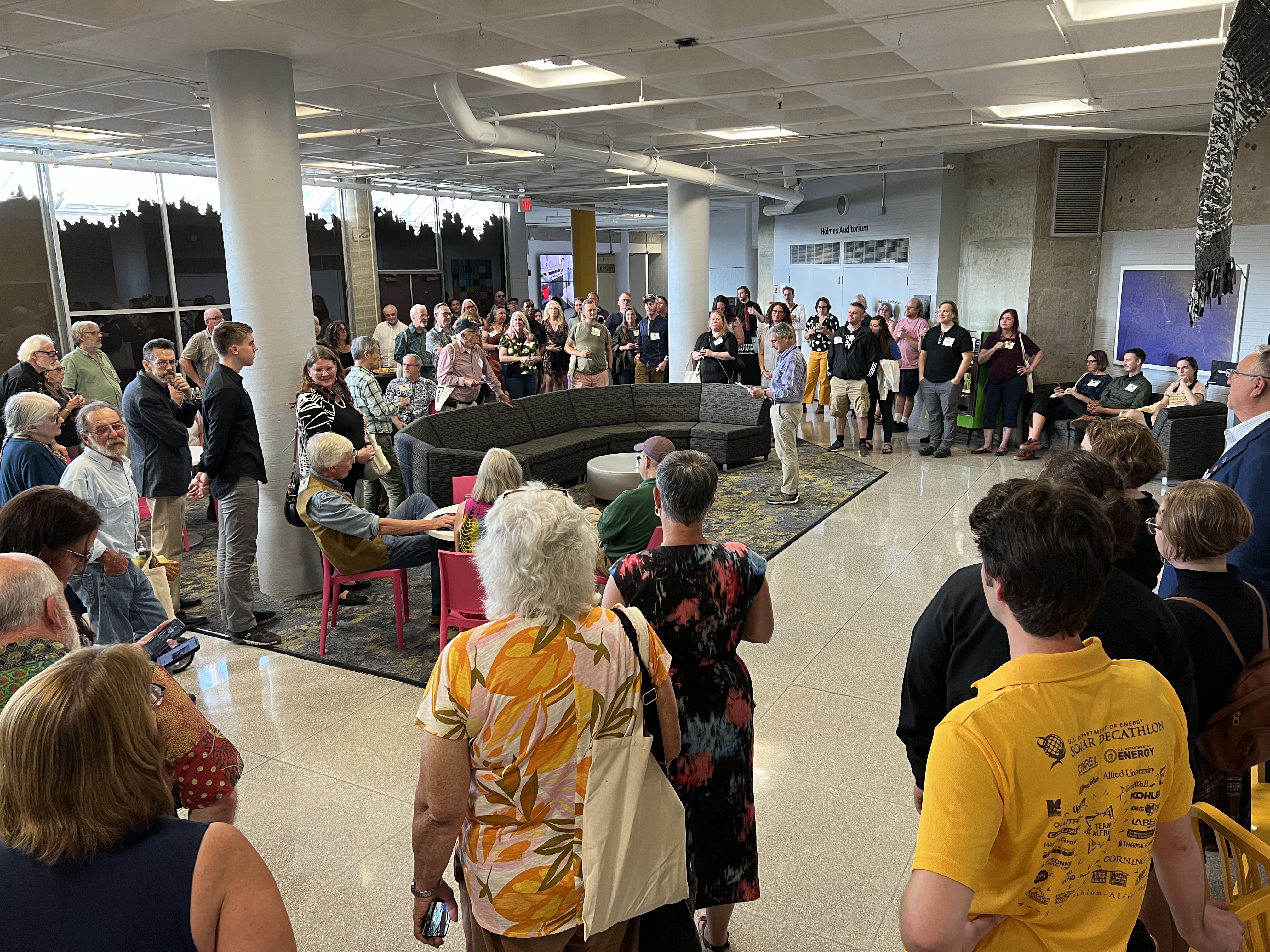
Opening Reception in Harder Hall Lobby.
Alumni from the classes of 1970-76 and 1992-94 have been invited to campus to celebrate an exhibition of Brady’s work. The weekend-long event kicks off with an opening wine-and-cheese reception in the Harder Hall Lobby ahead of public receptions of the Andy Brady print exhibition and associated alumni exhibitions.
The Andy Brady print exhibition, “Andy Brady: Steward of Precision,” will open Thursday, Sept. 8, in the Fosdick-Nelson Gallery, with an opening reception from 6-8 p.m., and will remain on view through Oct. 22. Curated by Friendship, ME-based artist Pam Cabañas ’74 (BFA) and Joseph Scheer, professor of printmaking, from the select archives of Brady’s life’s work, the exhibition features work largely from his time at Alfred. The exhibition is sponsored by Institute for Electronic Arts and alumni who studied under Brady.
Concurrently, the “Then & Now Alumni Pop-up Exhibition” will be held in the Robert C. Turner Gallery, Harder Hall. The exhibition is a one-time transmedia showing of work by Alfred University alumni which will run through the weekend.
The nostalgic weekend culminates with a grand celebration and pig roast dinner at Foster Lake. The event is a tribute to Brady, who taught at Alfred from 1970-76 and passed away in 2022, and will also honor Scheer for his more than 34 years teaching at Alfred.
Andy Brady: Steward of Precision
ANDY BRADY: STEWARD OF PRECISION presents over 53 extraordinary works from the archives of this esteemed Alfred University Professor of Printmaking (1970-76). Brady was a standard bearer of clear thought transposed into visual mediums through expertise and an exceptional standard of workmanship. This exhibition re-examines the astonishing works he produced through a wide range of print media. Andy Brady’s complex works and teaching shaped the lives and practices of his students in profound dimensions during his years at Alfred.
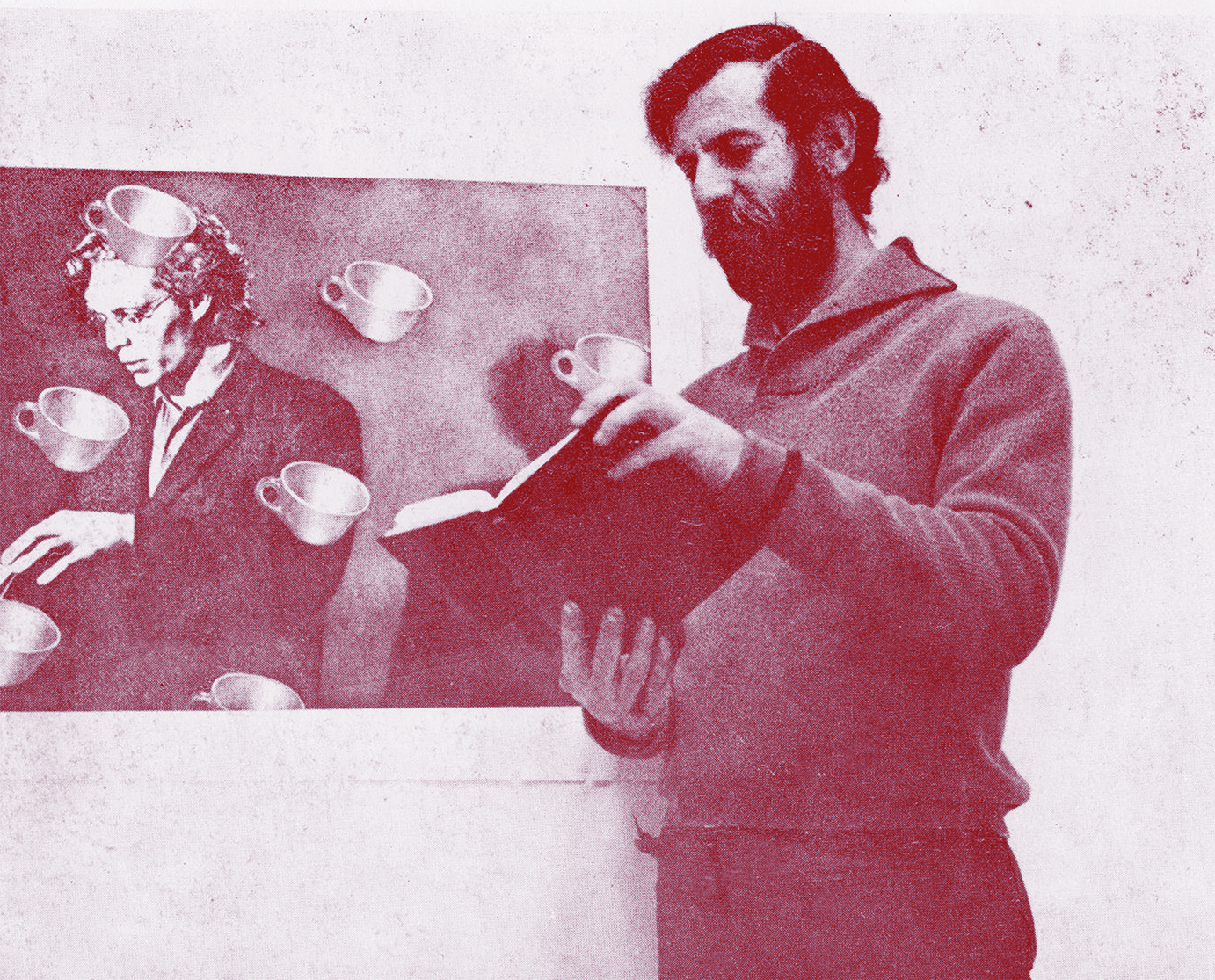
Andy Brady, 1972.
Selection of work featured in Andy Brady: Steward of Precision.
Crucifix
1967
Lithograph
30 x 22″
How to Make a Box: Coffe Cups
1964
Color Lithograph
22 x 30″
The Fall of Four
1972
Etching with Airbrush Aquatint
30x 2226 x 38
Question of Nationality
1966
Two-color Etching
22 x 30″

Andy Brady: Steward of Precision, Fosdick-Nelson Gallery.
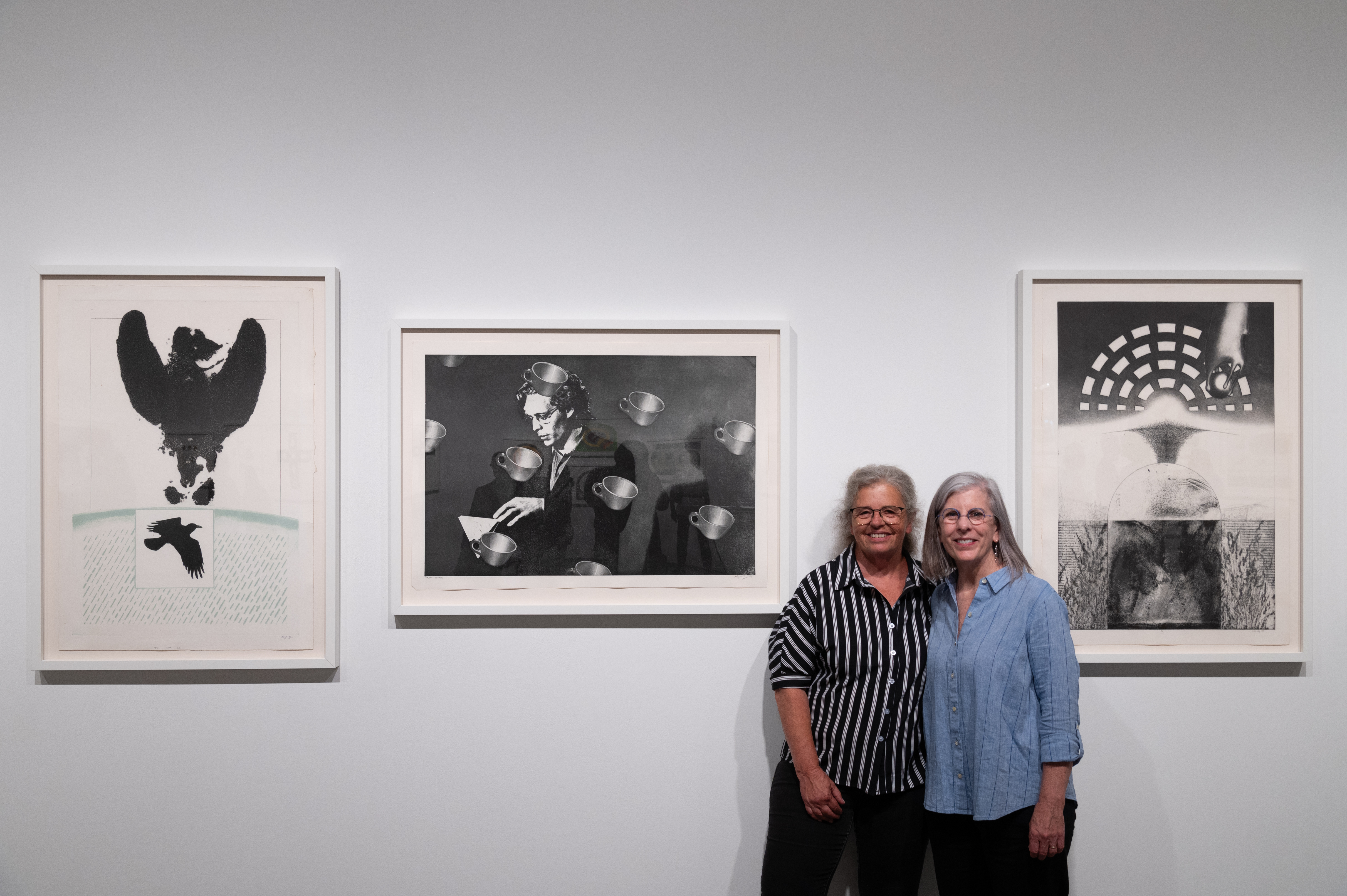
Curator Pam Cabañas with Gallery Director Sharon McConnell.
Gallery of Andy Brady: Steward of Precision Opening Reception.
FOREWORD: STEWARD OF PRECISION - Joseph Scheer
Less than two years ago, Pam Cabañas contacted me and said she was a former student of Andy Brady’s and was coming to Alfred for his memorial service. She requested to meet to show me some of his prints. At that time, I did not know who Andy Brady was or that, in fact, he had been a former faculty member at the School of Art and Design at Alfred University. She said that the prints were amazing and something needed to be done with them to honor her former professor. At the time I thought,” .. there may be a handful of prints that we could perhaps show on one wall at the Cohen Gallery or in an area in the print shop or somewhere else within the school.” had no idea of the quality and quantity of the prints that she had. Upon seeing the actual prints, I quickly realized that exhibiting them would be something major. Their great number, together with their quality, craftsmanship, content, and scale deserved a much larger venue. Then, together with Pam, we submitted a proposal to have an exhibition of the work at the Fosdick-Nelson Gallery. It was quickly approved by the gallery committee, and so we began curating the show that we titled STEWARD OF PRECISION. With Pam’s passion as a driving force, it seemed absolutely necessary to honor this artist’s life-work and the astonishing prints he created.
I had initially seen approximately 40 prints that Brady had given to Pam’s care as part of his archive. We could have easily curated a show for the Fosdick-Nelson based solely on this archive. Pam, who then met with Andy’s daughter Hana Rose, learned about a set of flat files filled with Andy’s lifetime work in print media. Hanah’s collection included original etching plates, ortho films for photographic processes, working proofs, drawings, and works left incomplete. Thanks to her generosity, we were able to curate a more comprehensive exhibition that included a range starting from early works to the last etching he was known to have completed in his studio in Angelica, New York, after he had left Alfred. Pam spent a week organizing the prints and documenting those she didn’t have in her archive. Then, Pam and I visited Hana in her house in Wellsville, NY, where we launched into the most difficult task of making the final choice of the prints to include in the exhibition.
Printmaking, as an area of study in the School of Art and Design, was started by John Wood in the early 1960s. A decade later, art schools across the country began to teach printmaking as a concentration. Major advancements in technology took place in the 1970s and ’80s across the field of printmaking. The long-standing and unique pedagogical philosophy at Alfred allowed for the different media within printmaking to be taught together, next to each other, without being singled out as distinct processes in the curriculum.
Throughout its history, Alfred’s print shop has been designed with the etching presses located near the litho presses. In the printmaking courses, one would switch between one medium and the next to expand the notion of what a print could be by combining woodcut with etching, lithography, collagraphy, letterpress, and so on. It is only recently that some art schools have adopted this way of teaching print media. Many schools still feature specialized courses in each of the different media, sometimes in separate facilities that make crossing over impossible for students, who are forced to specialize in a single printmaking process. This way of working does have its benefits, as one can spend a lifetime developing and working across the intricacies of a particular process in printmaking. On the other hand, by working across the different print medias, one can see how they feed into each other and how they can be advanced or combined in ways that further the possibilities of printmaking as a fine art.
Andy Brady’s work reveals an artist who was very accomplished both technically and conceptually through various medias of printmaking. His very early works reveal high proficiency and skill both in etching and lithography. Close examinations make clear they were created by a master printer. At an early stage, he was already very inventive with techniques. This becomes evident in the bUIcK SerIEs consisting of color intaglio prints where he used a sophisticated system for blending color. The large size and generous scale of the works show a mastery of craftsmanship. He achieved luscious color prints by hand, without access to the digital technologies of today, with precise draftsmanship and very complex registration systems. In his early work, he was already working fluidly across photo mechanical processes with the inclusion of hand drawing and tonal systems such as aquatint with spectacular results.
Throughout his career, Brady combined expressive drawing, featuring very fine detailed draftsmanship, in his printmaking. He often included photo processes, with ortho film transparencies, in his prints. He used ortho films in the darkroom with a copy camera, as part of photo-litho and photo-etching processes utilized at the time. He applied a halftone screen in the exposure process to achieve an effect of tonal range and avoid high-contrast in an image. Nowadays, digital technologies render such adjustments much easier to achieve. At first, upon seeing some of the prints, I thought they were all hand-drawn. After accessing the archives at Hana Rose’s home and seeing the very large ortho films in her collection, it became evident to me how he had actually produced some of the prints. Sometimes, he used halftone dots, but often utilized high contrast images without halftone dots that gave a very expressive quality to images I had initially mistook for drawings. I took on the task of framing the works myself. This gave me the opportunity to examine every print very carefully. Throughout the catalog, I included comments regarding the ways I believed the prints were produced. When I shared the prints with colleagues, they often commented that the work was broad-based, even eclectic. This 1 found to be untrue: even though the range of subject matter and processes is broad, Brady often returned to common themes for creating individual series throughout his career. In these series, a core subject is investigated through several prints, held together through common shared motifs. For example, in HOW TO MAKE A BOx, a series lasting throughout Brady’s career, lithographs and etchings depict several different types of boxes that can be constructed by various means of folding, often with the addition of tabs. Their content ranges from highly critical, to political, to very sensual. The theme of How TO MAKE A BOX could be considered instructional in nature, perhaps as a way of teaching design, but I have noticed this subject was often explored in John Wood’s work and Jessie Shefrin’s early pieces, not as hard-edged design, but for purely expressive means. Political commentary is evident throughout the work, often referring to the antiwar movement. It was the Vietnam era, after all, and much of Brady’s work completed at this time must be looked at within the context of reactions to this conflict. Other comments clearly show complex global perspectives, as with images of the United States’ flag and the world map as a yo-yo. However, the work is often grounded in spiritual undertones and sensuality. In some prints, the spiritual, political, and sensual worlds get taken up separately or in combination. A dry sense of humor, with an uncanny playfulness is never far away, and remains integral to the prints.
CURATOR'S NOTE: LEAVING FOR PATHS UNKNOWN - Pam Cabañas
Alfred, New York. 1970. Art students toss away the mandatory Freshman beanie and the new skirts and sweaters packed by our mothers. All traded in for jeans and flannel shirts, construction boots and windblown hair, clay dust and causes. It was The Revolution, after all. Barriers were broken down, students and their professors became close friends in the art school, always in the studios: hard at work was the badge of honor. Hard at play worked, too! We were comrades flying the flag of ART as the whisperer to a world undone by rules, tradition, greed and power.
Well, there was Andy Brady amidst us, like a cat …stealthily willing us to watch and learn. I watched him. I watched him work in the print shop, each movement purposeful, no movement or effort wasted, no hesitation, pencil behind his ear, meticulously moving forward to his goal-a good print. Who could ask for more amidst the chaos of social change? Hendrix and Janis, good grief! Think of it: her band was called “BIG BROTHER AND THE HOLDING COMPANY!” Dylan and Lennon.. against the backdrop of Richard Nixon … a good print!
So, the years pass; Brady and I remain friends and admirers of each other’s work. I guess the antics of our lives could be a Netflix mini-series when I think back. Then, on one visit to his farm, I think in 2017, he asked me to hold his artistic legacy and be the one to manage his archive. OK, Andy, and I drove off with a carload of prints and a heavy heart thinking I may never again see this man. This mentor, this maker of images that have stuck in my mind’s eye all these many years. This man, whose methods and work ethic, the vision of how he moved in the studio, helped me over the humps and bumps in my own work over the years. I see his work in my work! Thinking I may never see him again. That wild guy… the one who showed us how to leave convention behind for paths unknown. I, in fact, never did see him again, but we talked, and now, here we are.
Then & Now Alumni Pop-up Exhibition
A one-time transmedia showing of alumni work. Each artist can exhibited original work from their time at Alfred and/or a contemporary piece. The show adjourned at the end of the weekend event.
The exhibit was held in the Turner Gallery and was installed on Thursday September 7th and ran through the weekend.
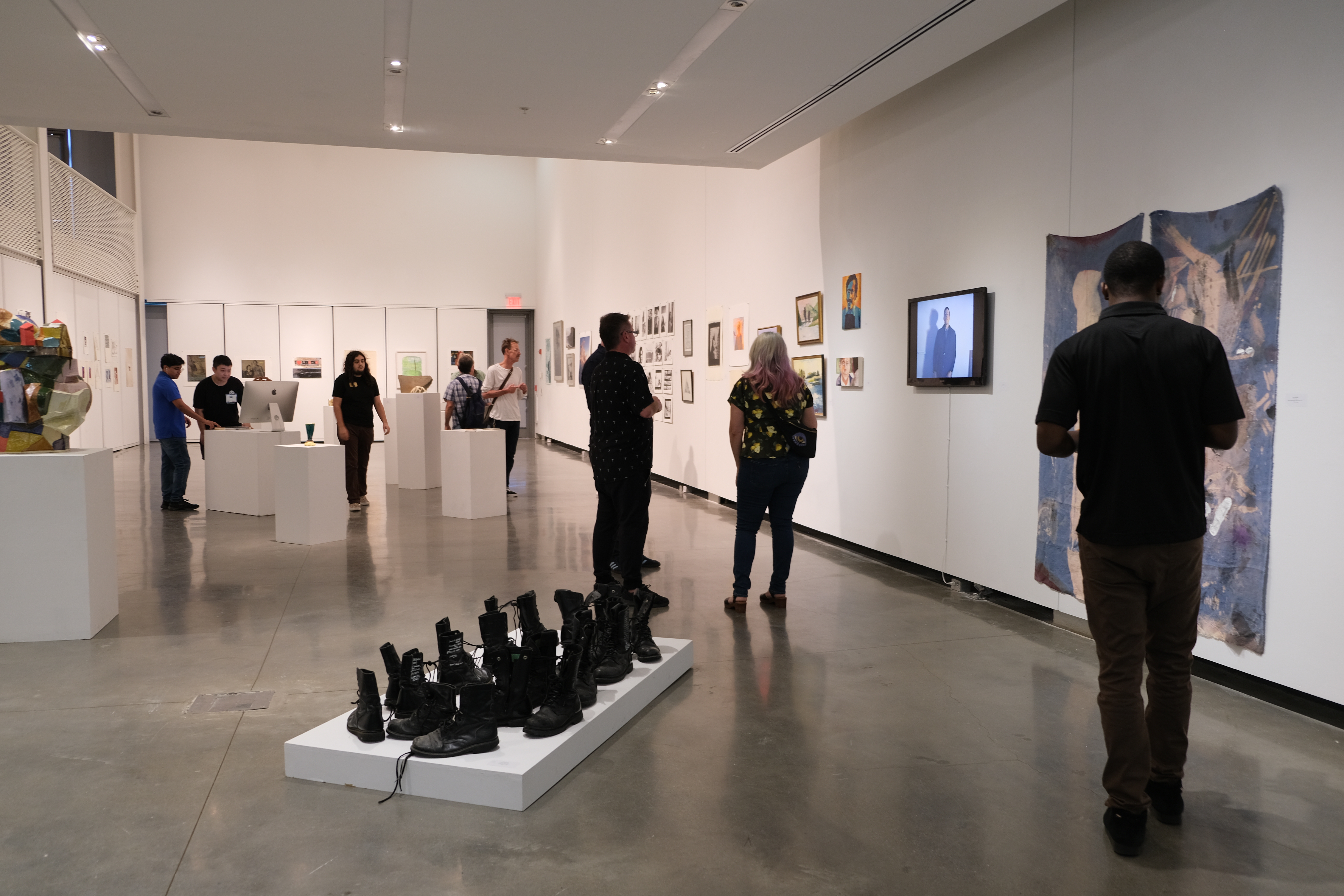
Then & Now Pop-up Exhibition Opening Reception I.
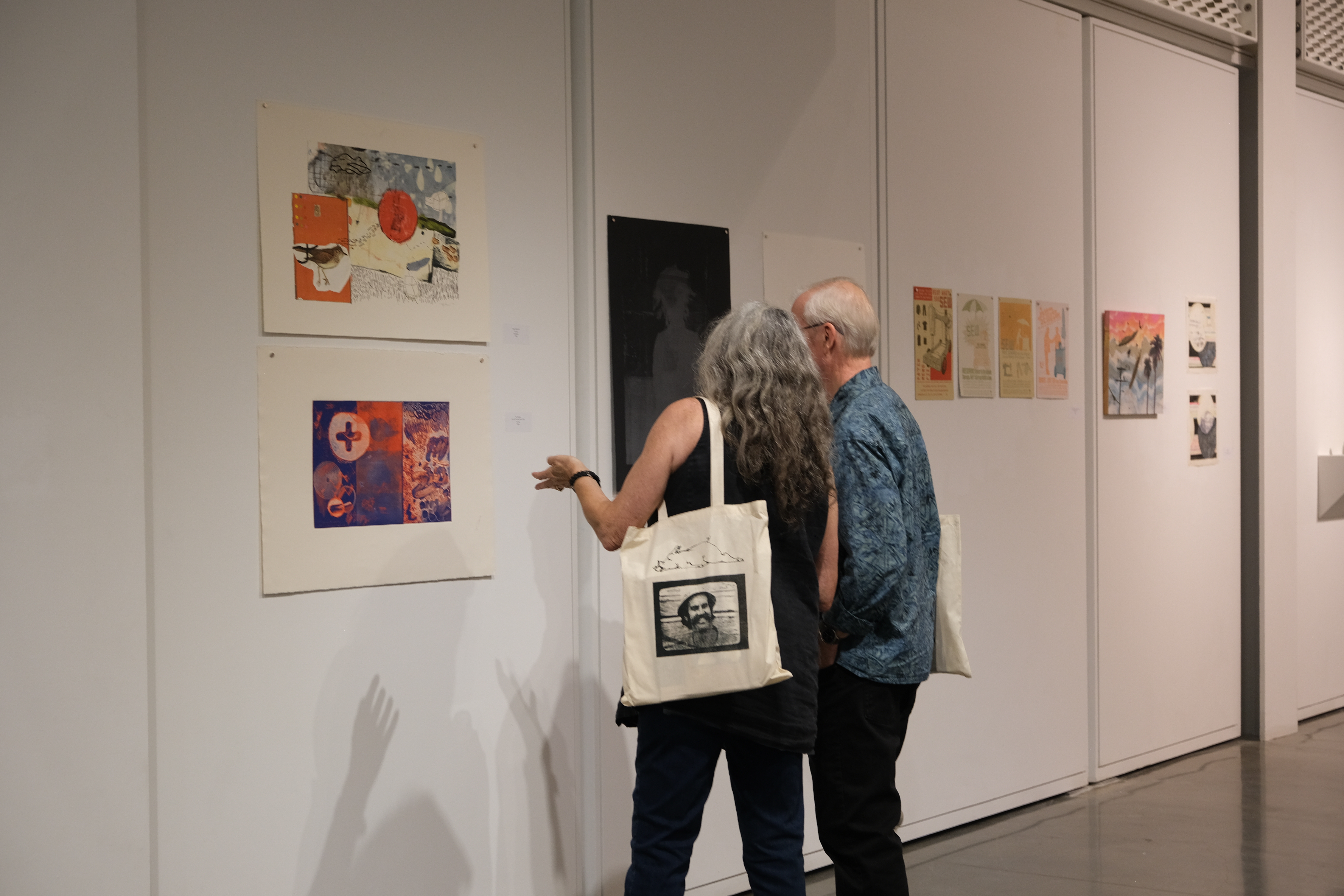
Then & Now Pop-up Exhibition Opening Reception II.
Grand Celebration & Pig Roast
A tribute to Brady, who taught at Alfred from 1970-76 and passed away in 2022, and also an honor to Joseph Scheer, who taught at Alfred University for over 34 years.
The Pig Roast of September 09, 2023 was ode to a pig roast held by IEA Donor Chad Katz when they were an Undergraduate Student on May 10, 1993.

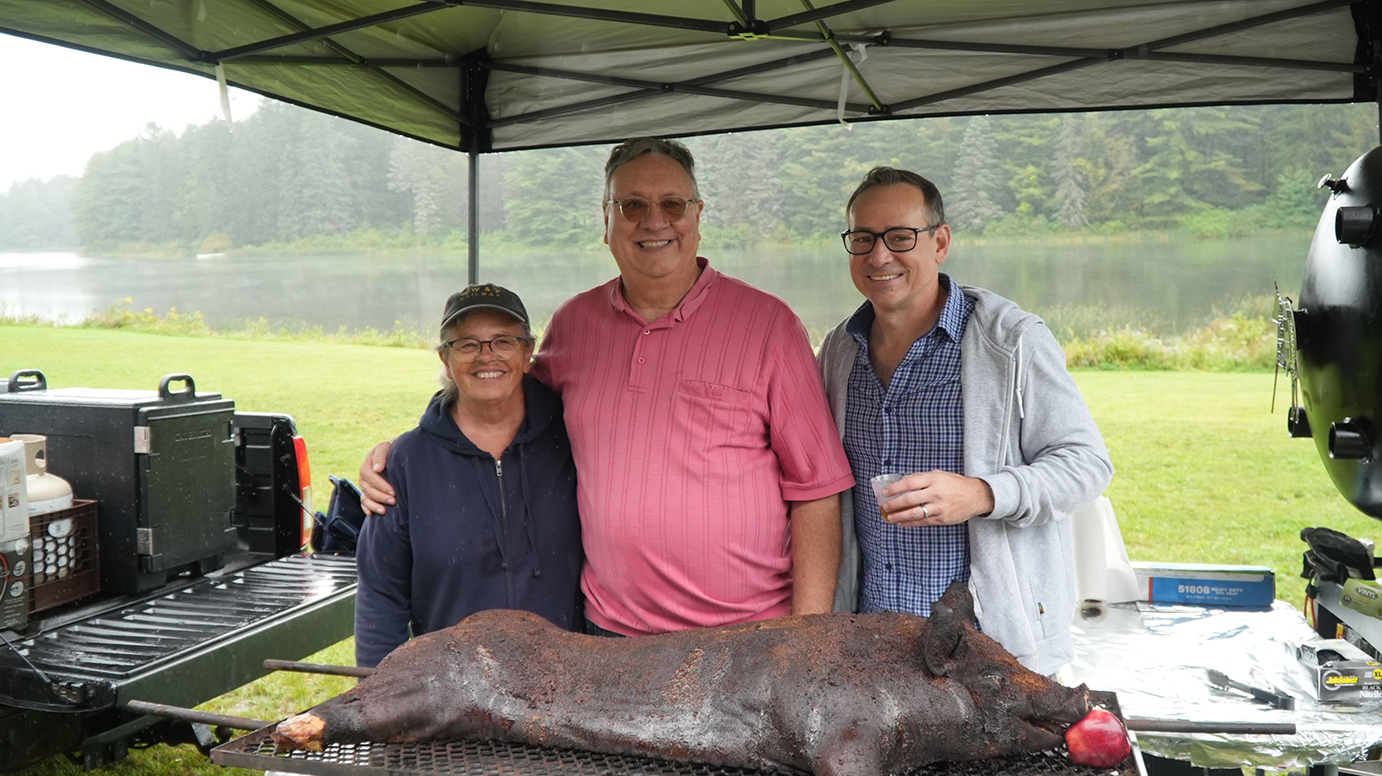
Curator Pam Cabañas [’74], Director Joseph Scheer [’84] and Chad Katz [Alumni ’93, and IEA Supporter] together during the Pig Roast Celebration held at Foster Lake.
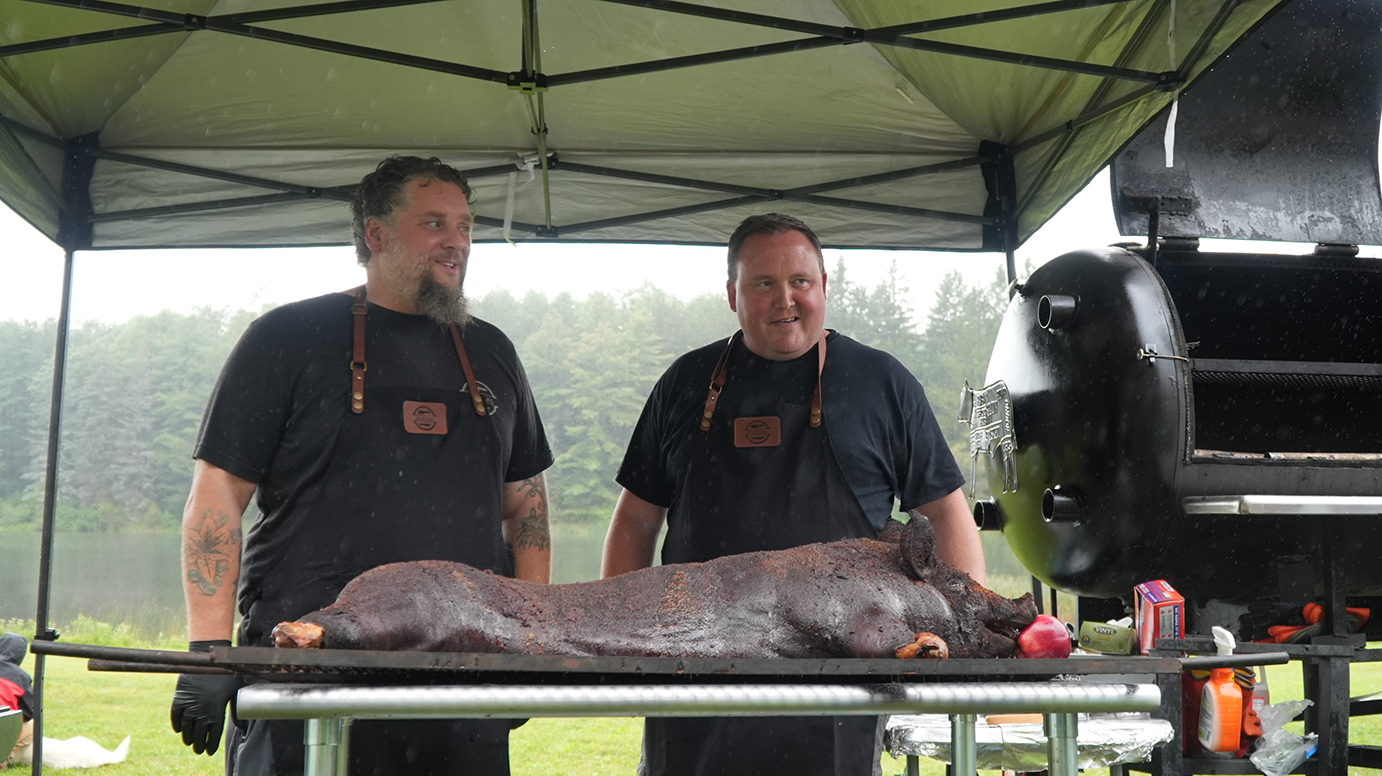
Good Eats BBQ’s prepared Pig Roast.
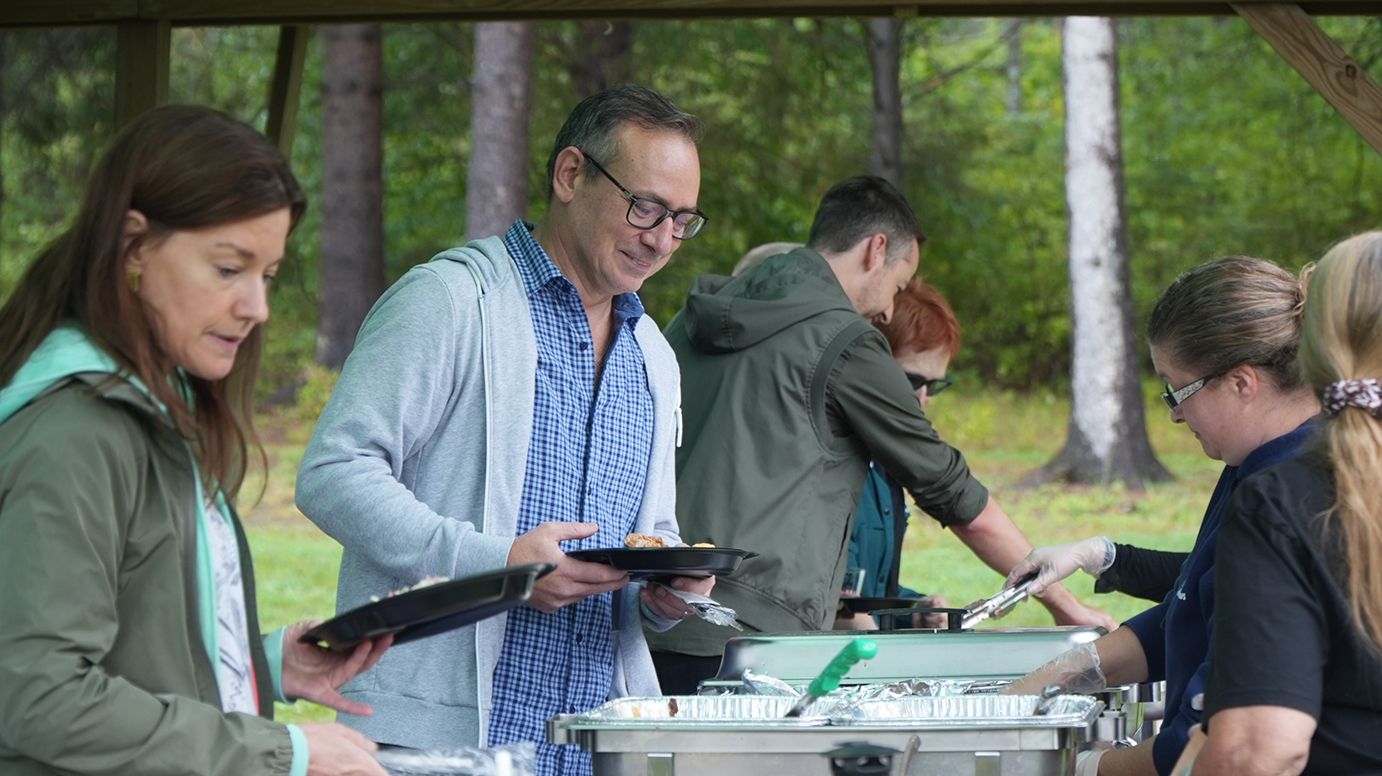
Pig Roast Celebration Attendees I.
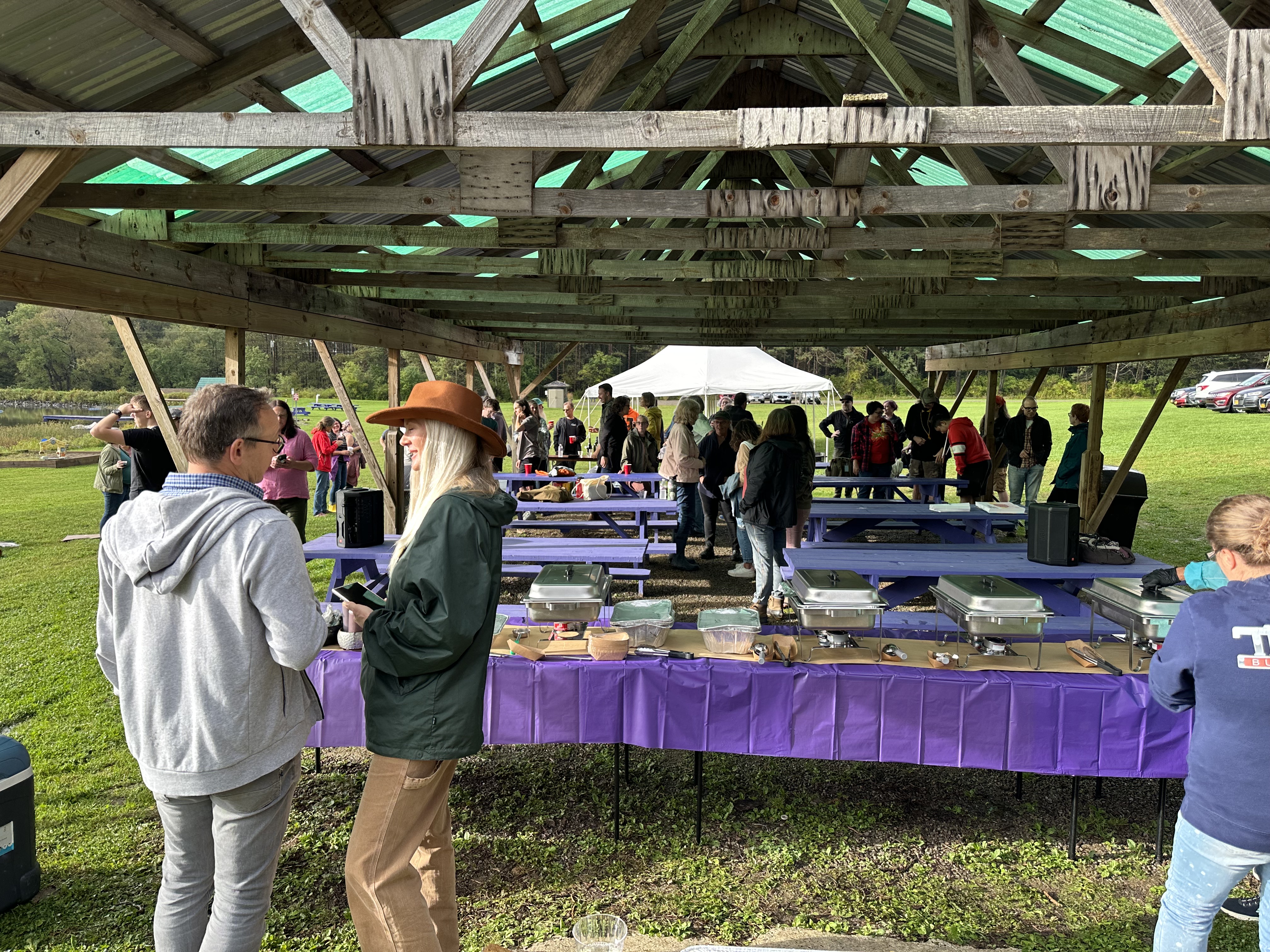
Pig Roast Celebration Attendees II.

In memory of Andy Brady.


